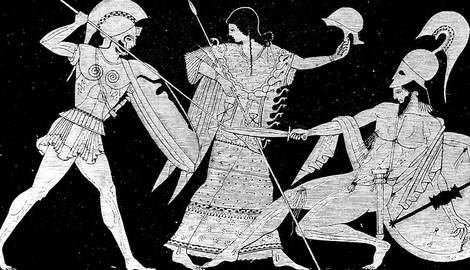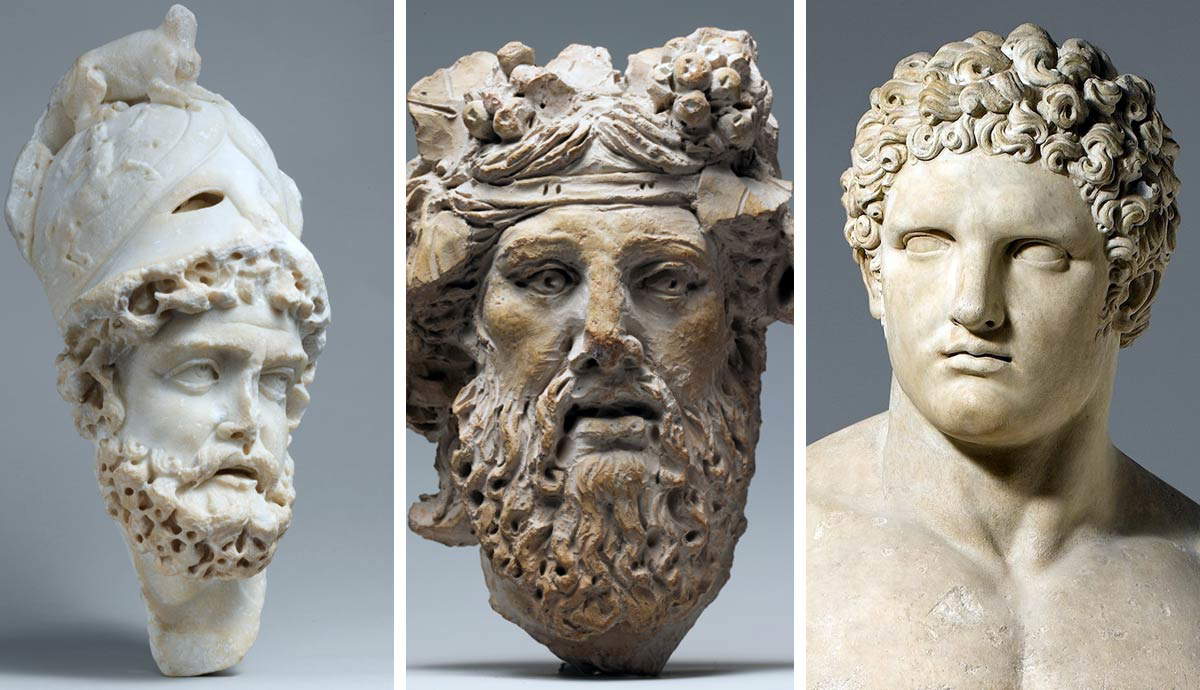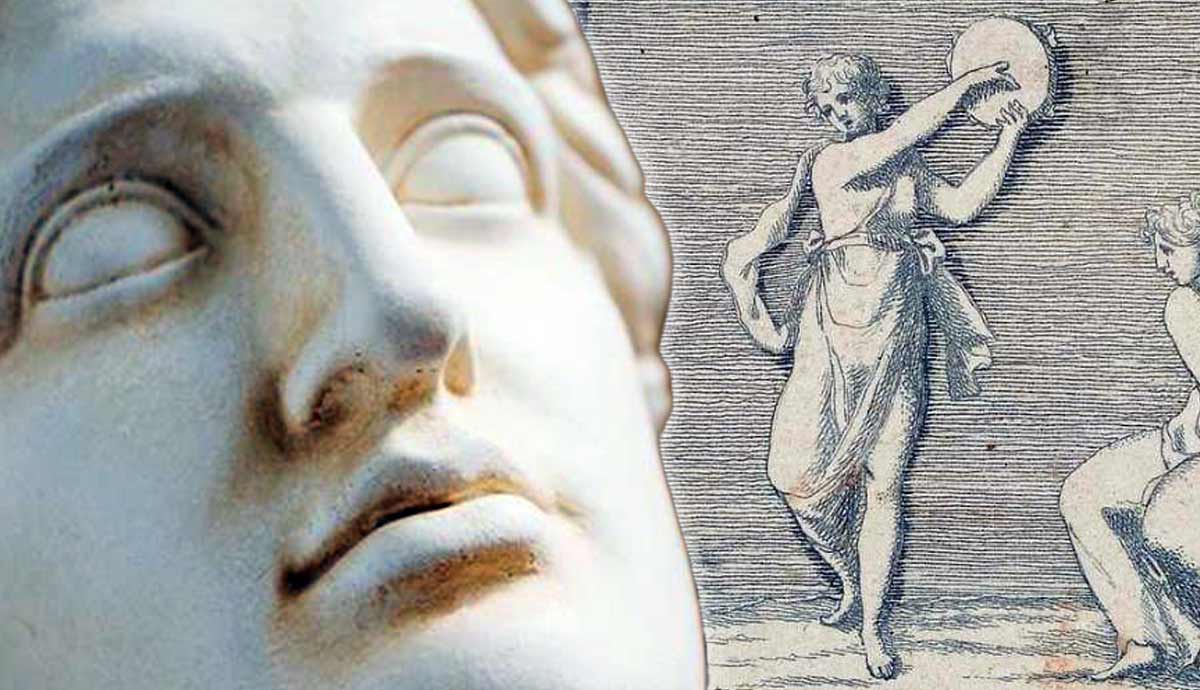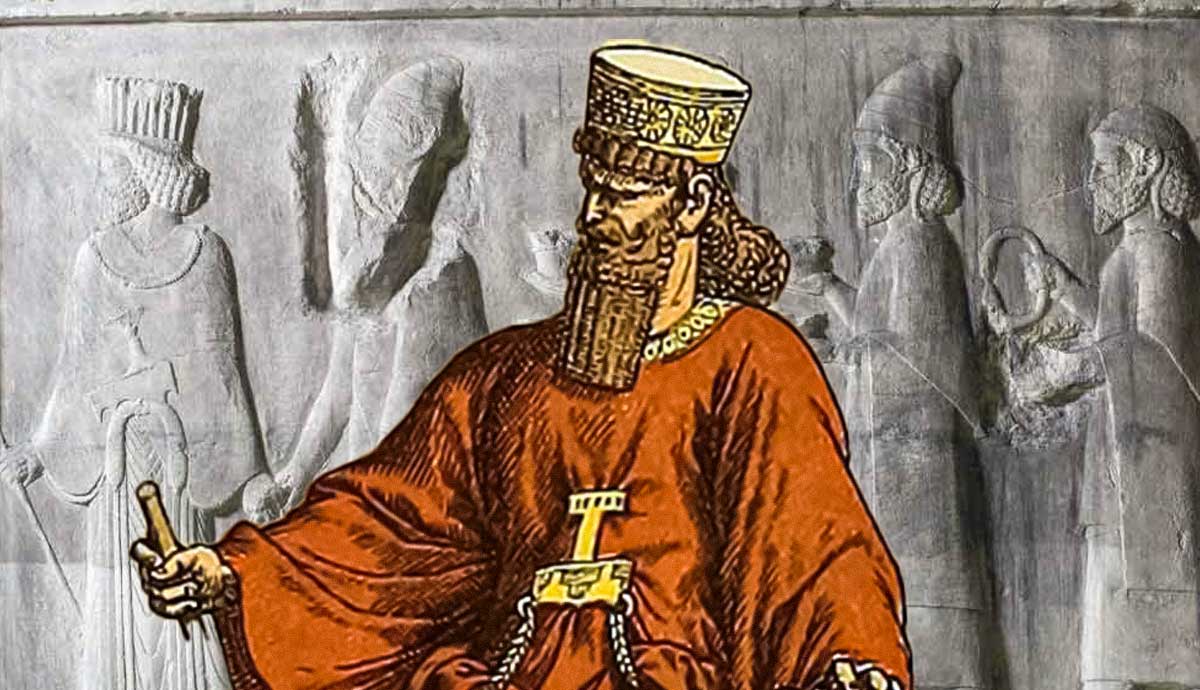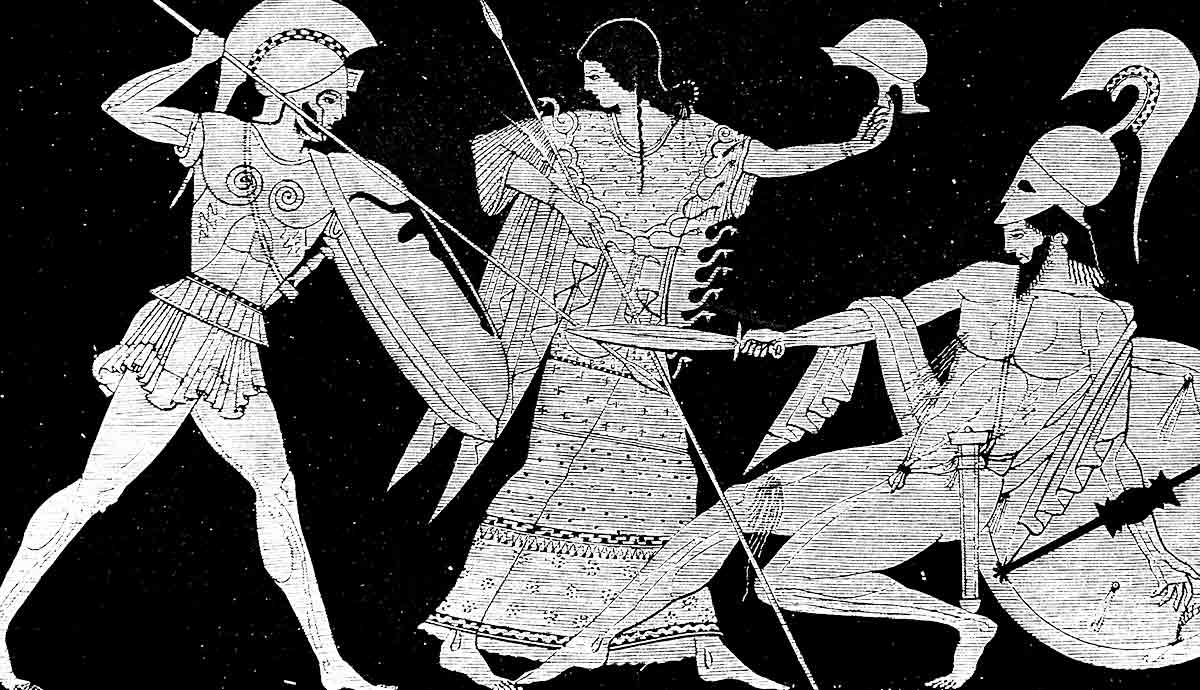
The Trojan War, famously recounted by 8th century BCE poet Homer in the Iliad, has been a subject of awe and debate among scholars, ancient and modern, for over 2,000 years. While the views of modern scholars differ on whether or not the war happened, they generally agree that Troy was a real city and, if a war between the Greeks and Trojans did occur, it certainly didn’t happen as described in the Iliad. Homer was a poet, not a historian, so taking his poem as fact would be problematic, though it probably contains kernels of truth. To the ancients, the Trojan War was a historical fact and marked the boundary between myth and recorded history. They went to great lengths to determine when the war occurred.
Mythical Context for the Trojan War

In ancient Greek tradition, the Trojan War began because Paris, a prince of Troy and the son of King Priam, was chosen to judge a beauty contest between the goddesses Hera, Athena, and Aphrodite. Each goddess offered him a prize if he chose them. Hera offered him dominion over the kingdoms of the world; Athena offered him mastery of the battlefield; and Aphrodite offered him the most beautiful woman in the world to be his wife. Paris chose Aphrodite, and the woman he was promised was Helen of Sparta. However, Helen was the wife of Menelaus, the king of Sparta and brother of the Mycenaean king, Agamemnon. While being hosted at Sparta, Paris abducted Helen, along with a sizable amount of treasure, and retreated back to Troy.
Paris’ crime was not simply stealing the Spartan king’s wife. He also broke the laws of xenia, the relationship between host and guest that was an integral part of ancient Greek society. Xenia was a reciprocal relationship between host and guest, roughly translated to “guest friendship.” It didn’t only tie two individuals together but entire groups. A relationship between two kings, or in the case of the Iliad, a king and a prince, essentially allied the kingdoms together. To violate this bond was not only an affront to societal norms but to Zeus himself, who protected these laws. As such, it wasn’t only Paris who was guilty, but his entire kingdom for condoning his crime.
Troy According to the Ancient Historians

Ancient Greek historians spilled a lot of ink to provide an accurate chronology of the Trojan War. Some had arrived at what modern scholars consider to be a realistic date, though the way they got to their answers amounted to what were essentially just good guesses. When reading the ancient sources, it is important to note that they didn’t date events in the same manner that we do today. Years were measured according to the changing of seasons and the phases of the moon and recorded based on the rule of kings or the terms of leading magistrates. Even within Greece itself, calendars differed depending on which polis, or city-state, one belonged to.
There was no common numerical value ascribed to years. As such, the ancient sources don’t provide dates; they provide time frames relative to other events. In Herodotus’ Histories, he gave a general time frame for the Trojan War by placing it between the birth of Heracles and the birth of Pan, so 900 years to 800 years before the historian’s own time. Converted into a time period recognizable to us, this placed the war in approximately the 13th or 14th century BCE.
Eratosthenes, a 3rd-century BCE scholar who became the chief librarian at the Library of Alexandria, gave a more precise date for the Trojan War. He calculated that the fall of Troy took place in 1183 BCE. Though all of his works were lost when the Library of Alexandria burned down, his historical work survives in fragments and through references by later authors. It is thought that he dated the Trojan War using various king lists or genealogies, as well as the Olympic victor list. Using a span of 80 years between the fall of Troy and the return of the descendants of Heracles to the Peloponnese, related by Thucydides, Eratosthenes then used the Spartan king list down to the reign of Lycurgus, the Spartan lawgiver.

Eratosthenes placed Lycurgus’ rule 108 years before the founding of the Olympic Games, though how he got this number is unknown. There was also a tradition that Lycurgus was a contemporary of the Olympic Games founder, Iphitus. This was reconciled by assuming there were two figures named Lycurgus, or unrecorded games, before the Eleans started recording victors.
Since the games happened every four years, the list of victors was compared to other important events, such as the death of Alexander the Great in 323 BCE or Xerxes’ invasion of Greece in 480 BCE. Using this method, Eratosthenes dated the first recorded games to 776 BCE, and thus the rule of Lycurgus to 884 BCE. The Spartan king lists assume a generation of 40 years, and Lycurgus was the 6th king after the return of the Heraclids to the Peloponnese, giving an approximate time frame of 240 years from their return to the beginning of his own rule.
Another likely method used was dating the king lists of Sardis after it fell to the Persians. The fall of Sardis was synchronized with the 58th Olympiad, which can be converted to approximately 548 BCE. Herodotus calculated that there were 22 generations of Heraclid kings in Sardis spanning 505 years before they were overthrown by the Mermnadae family, who ruled for the next 170 years. All of these time frames, when added together, give a date for when Heracles lived around 1223 BCE. Assuming Heracles lived a generation before the fall of Troy, which placed the end of the war in 1183 BCE.
Diodorus Siculus, a 1st century BCE historian from Sicily, likely used Eratosthenes’ calculations in his own work. He wrote that the fall of Troy took place 786 years before the Athenian empire’s expedition against Sicily in 415 BCE, placing the destruction of the city to the year 1183 BCE. The traditional length of the war was 10 years, which placed the beginning of the war in 1193 BCE.
The Search for Troy & Heinrich Schliemann

The legend of Troy has long been debated by modern scholars. Was Troy a real city, and if so, where was it located? Herodotus believed it was located at Hisarlik in modern-day Turkey, while the Roman geographer Strabo believed it was somewhere between the Scamander and Thymbrios rivers. Later, 17th and 18th century CE scholars believed it was between Alexandria Troas and Sigeum on the west coast of the Troad, but the truth continued to be elusive.
In the 19th century CE, Heinrich Schliemann made what would be considered one of the most important discoveries in the history of Western archaeology. Having amassed a vast fortune from his career as a businessman, he used his wealth to excavate the mound at Hisarlik and discovered nine different occupation levels, each with various sub-levels, spanning a time period of 2,000 years from approximately 3000 BCE to 1000 BCE.
Troy had apparently been discovered. Though there is still skepticism over whether Hisarlik is, in fact, the site of the legendary city, no other alternatives have been seriously considered or as generally accepted as Hisarlik. This left scholars with a question. If this was Troy, which of the occupation levels belonged to the Troy described in the Iliad?

Heinrich Schliemann believed that the earliest levels must be the site of legendary Troy. He had a trench cut directly through the mound, regrettably destroying much of the site’s later levels. This level, designated as Troy II, was dated to the Early Bronze Age, a full thousand years too early to be Homer’s Troy. It is now generally agreed that the sixth level, sub-level h, designated as Troy VIh, is the most likely candidate for Homer’s Troy.
While much of the level was destroyed during Schliemann’s excavation, enough survived to indicate a prosperous city that flourished for several hundred years in the second millennium BCE. Ceramic evidence from the site shows that it traded heavily with the Mycenaean culture in mainland Greece and that the city fell sometime in the mid-13th century BCE, corresponding closely with Herodotus’ account of when the Trojan War occurred. However, it is not known whether the destruction of the city was due to human action or environmental factors. If this level is the Troy that was described by Homer, more evidence would be needed to prove it.
Bronze Age Greece and Anatolia

A challenge with determining whether Hisarlik was the Troy that Homer wrote of is the general lack of written evidence from the site. This makes it nearly impossible to determine how the people of Troy VIh perceived themselves and their relationship with their neighbors. The only writing found at the site comes from a seal with two names inscribed on it in the Luwian language. For a better understanding, scholars had to turn their attention to Near Eastern kingdoms contemporary with the site.
The major power of the region at the time was Hatti, the kingdom of the Hittites. Luwian-speaking peoples occupied a wide area of western Anatolia, a region called Luwiya, according to Hittite texts, though the name eventually was replaced with Arzawa. Using Hittite texts, scholars were able to determine that a vassal kingdom called Wilusiya, or Wilusa, was located in the northwestern region of Arzawa, the same location as modern-day Hisarlik. Scholars have claimed that Wilusa is the Hittite way of writing Ilion, another name for Troy.

Once Troy had been found in Hittite texts, the next step in determining if the Trojan War ever happened was to find references to the Greeks. If the city of Wilusa was destroyed by a Greek army, surely there would be records of such an event. The Mycenaeans traded extensively with the western Anatolian coast, so scholars, led by Emil Forrer, searched Hittite records and discovered what they believed to be the link between the Greeks and Wilusa.
The Hittite texts reference a place called Ahhiya, or Ahhiyawa. It’s known from the Iliad and Odyssey that the Greeks didn’t refer to themselves as Greeks but as Achaians. Forrer deduced, and later evidence seemed to lend credence to the idea, that Ahhiyawa was the Hittite way of representing Achaia. From these texts we also know that the Greeks were militarily involved in western Anatolia and had come into conflict, either directly or indirectly, with Wilusa. However, the city was neither completely destroyed nor abandoned at this time. It was repopulated and remained under the vassalage of the Hittite kingdom.

There was a time when Troy was destroyed and abandoned, though this is attributed to the Troy VIIb strata, a smaller and humbler settlement dating to 1100 or 1000 BCE, 150 to 250 years after the prosperous city of Troy VIh. The destruction of this level is likely due to the so-called Sea Peoples, written about in Egyptian records, and coincides with a general collapse of Bronze Age civilizations at this time.
Homer’s Troy

So, was there truth in Homer’s Iliad, or was it entirely a work of fiction? The ancient Greeks and Romans certainly believed in the historicity of the event, though that’s not to say that they accepted every detail. Ancient historians and chronographers made great efforts to date the war and considered it the boundary between mythical and historical times. Dates for the war ranged from the 14th century BCE to the 10th century BCE, and some historians, such as Herodotus and Eratosthenes, were remarkably close in their calculations to what modern scholars have come up with.
Today, there is still debate about whether Homer’s Troy actually existed and whether a war between the Greeks and Trojans happened, but there is general acceptance that Troy was located at Hisarlik in Turkey. Through ceramic and archaeological evidence, scholars have been able to determine that the city prospered throughout the Late Bronze Age and was destroyed and resettled several times in its long history.
Whether that destruction came about at the hands of the Greeks is unknown, but there is evidence of military conflict between the two cultures around the mid-13th century BCE, around Herodotus’ estimated date for the Trojan War.
Selected References
Bryce, T. R. (2002) “The Trojan War: Is There Truth behind the Legend?” Near Eastern Archaeology 65(3), 182–195.
KÕIV, M. (2011) “A Note on the Dating of Hesiod,” The Classical Quarterly 61(2), 355–377.
Kokkinos, N. (2009) “Ancient Chronology, Eratosthenes and the Dating of the Fall of Troy,” Ancient West & East 8(0), 37–56.
Möller, A. (2005) “Epoch-Making Eratosthenes,” Greek, Roman, and Byzantine Studies 45, 245-260.
